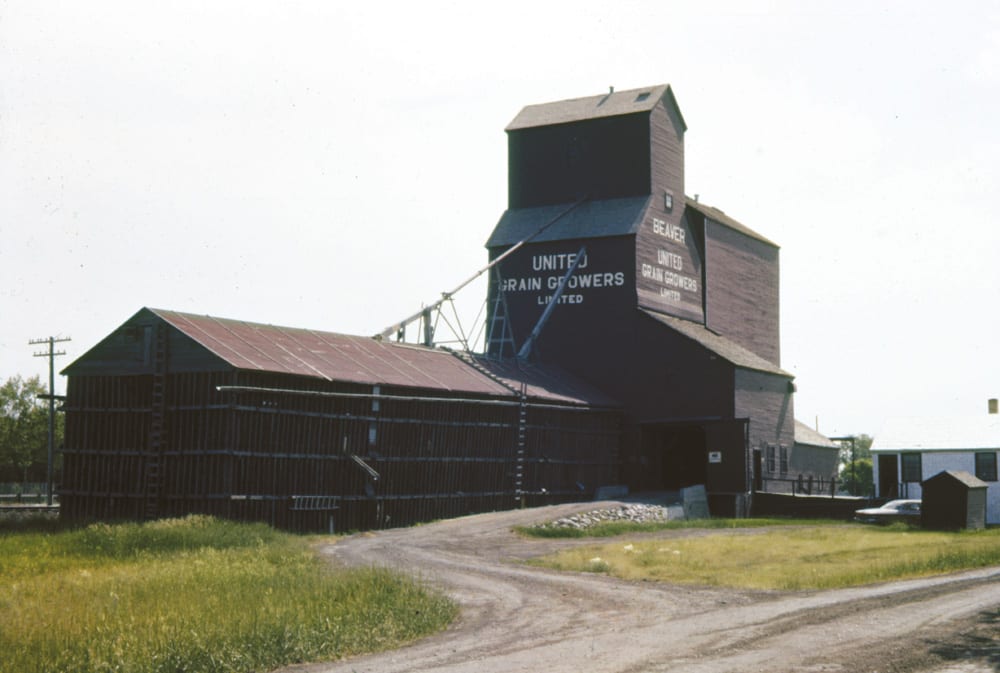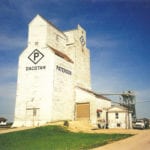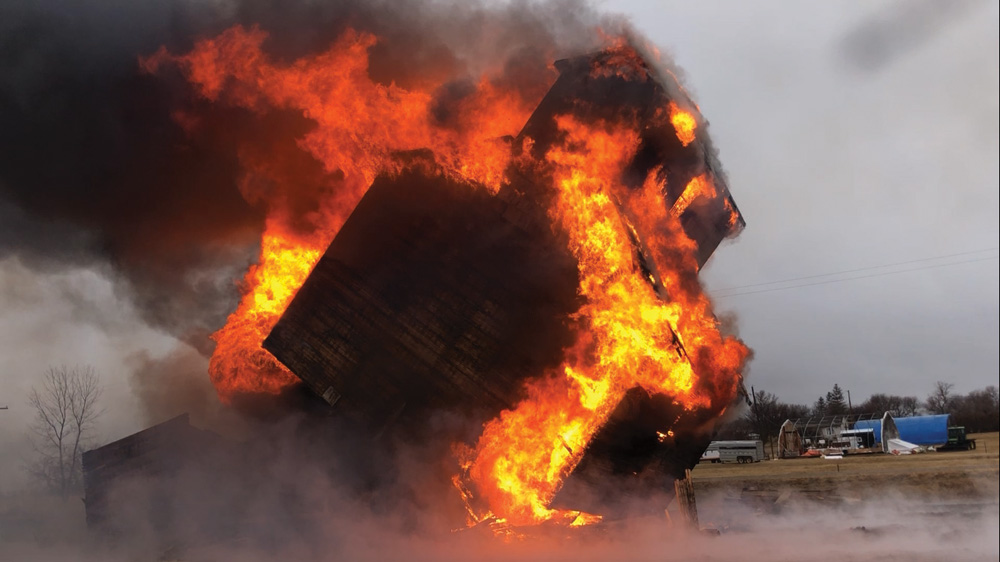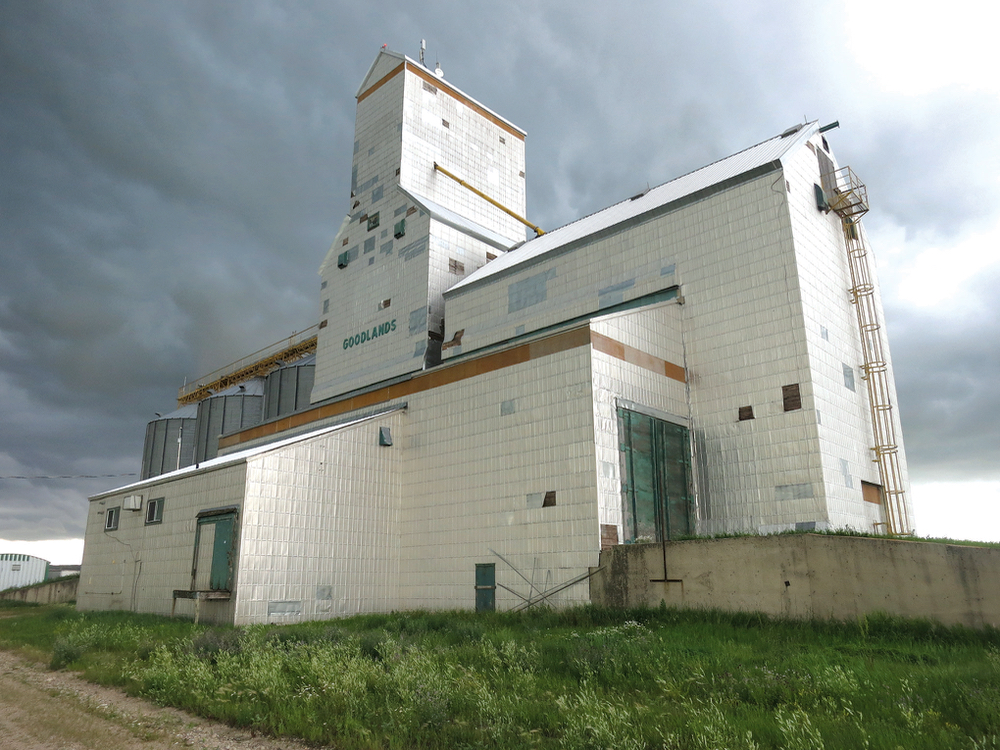
Olmstead_Elevator_cmyk.jpg
In 1910, 38-year-old Grover H. Olmstead of Chicago bought nine quarter sections of land in southwestern Manitoba. He and his wife Florence arrived at Pierson in 1911 and hired locals to build a large barn, two-storey farmhouse, and this small elevator. Unlike most elevators, it did not move grain using a leg. Grain dumped into a pit on its south (right) side flowed into a concrete basement beneath the elevator. From there, a motor-driven blower pushed it up a metal pipe to the top then into one of the interior bins. Grain was removed when it flowed by gravity through wooden spouts into a wagon parked in the basement. Olmstead sold the property in 1920 and it passed through several hands over the next 98 years.
Photo: Gordon Goldsborough
Dacotah_Paterson_cmyk.jpg
The Paterson Grain elevator and annex at Dacotah, on the CNR Gladstone Subdivision in the RM of Cartier, was comprised of two elevators sitting side by side. The one in the rear of this photo was built in 1957 while the nearer one was constructed in 1917 and moved here in 1971 from Cabot, a siding on the CNR Cabot Subdivision a few kilometres away. The entire facility was demolished in August 2003.
Photo: Mike Lisowski
Beaver_UGG_cmyk.jpg
An elevator at Beaver, on the CNR line northeast of MacGregor, was built by United Grain Growers in 1935 to replace a predecessor from 1915. Initially rated at 30,000 bushels, its capacity was increased by two balloon annexes intended as a temporary measure during the Second World War. One of them survived until a decade after this photo was taken in 1961. The crib annex on the other side of the elevator was built in June 1958. Closed suddenly in mid-September 1988, the elevator was removed from the site.
Photo: University of Manitoba Archives & Special Collections
In the 1950s, there were over 700 grain elevators in Manitoba. Today, there are fewer than 200. You can help to preserve the legacy of these disappearing “Prairie sentinels.”
The Manitoba Historical Society (MHS) is gathering information about all elevators that ever stood in Manitoba, regardless of their present status. Collaborating with the Manitoba Co-operator it is supplying these images of a grain elevator each week in hopes readers will be able to tell the society more about it, or any other elevator they know of.
MHS Gordon Goldsborough webmaster and Journal editor has developed a website to post your replies to a series of questions about elevators. The MHS is interested in all grain elevators that have served the farm community.
Read Also

Reaction rolls in on Health Canada dicamba restriction proposal
Spray expert says proposed dicamba rule change would ban ‘over the top’ use of the herbicide
Your contributions will help gather historical information such as present status of elevators, names of companies, owners and agents, rail lines, year elevators were built — and dates when they were torn down (if applicable).
There is room on the website to post personal recollections and stories related to grain elevators. The MHS presently also has only a partial list of all elevators that have been demolished. You can help by updating that list if you know of one not included on that list.
Your contributions are greatly appreciated and will help the MHS develop a comprehensive, searchable database to preserve the farm community’s collective knowledge of what was once a vast network of grain elevators across Manitoba.
Please contribute to This Old Grain Elevator website here.
You will receive a response, by email or phone call, confirming that your submission was received.
Goldsborough is interested in hearing all sorts of experiences about the elevators — funny, sad, or anything in between. Readers willing to share their stories can leave messages at 204-474-7469.



















